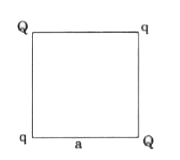five charge q1,q2,q3,q4and q5 are fixed at their positions as shown in figure .s is Gaussian surface .The Gauss's law is given by ∮→E.→ds=qε0
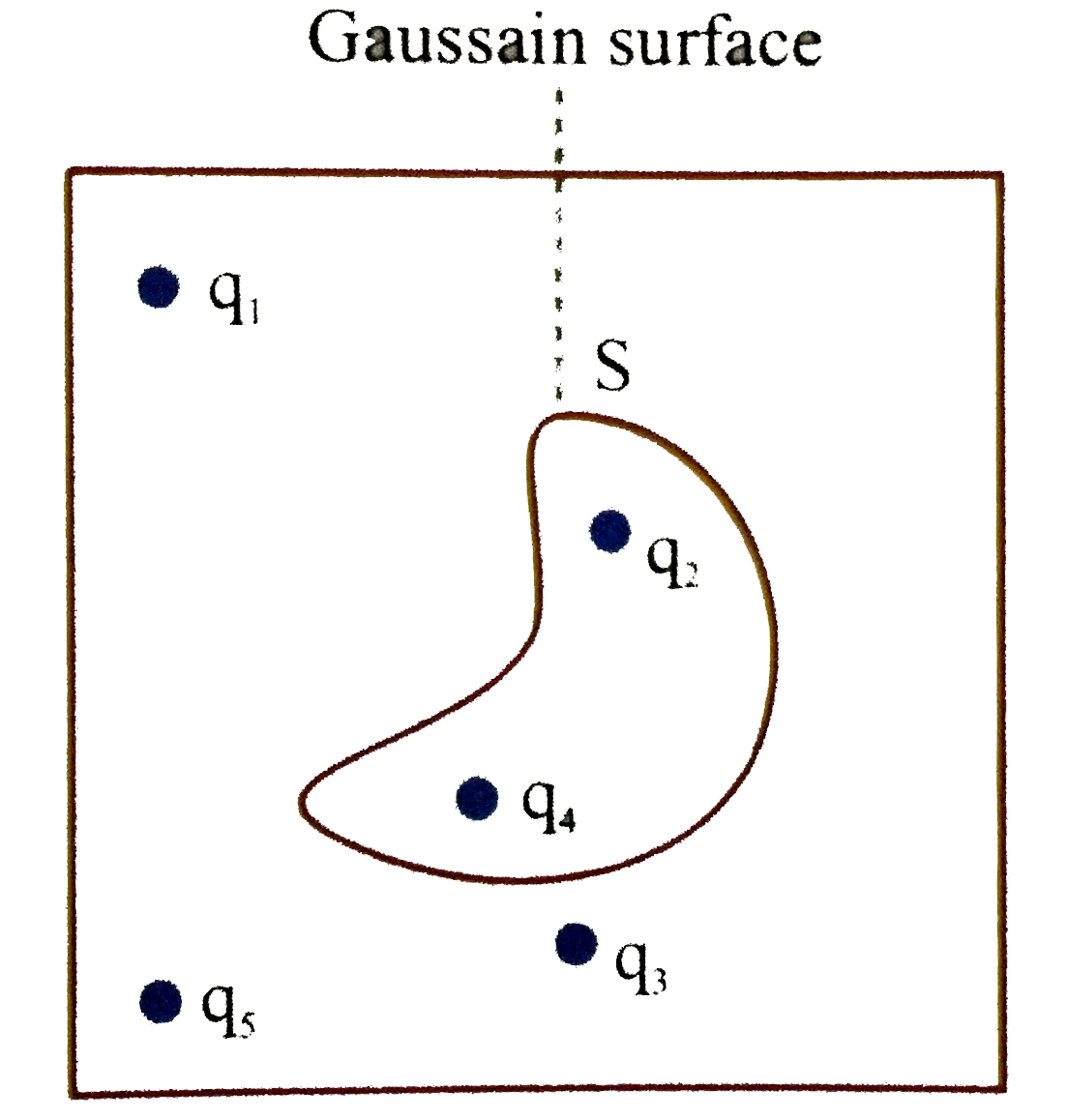
Which of the following statement is correct?
E on the LHS of the above equation will have a contribution from q1,q5 and q3 while q on the RHS will have a contribution from q2 and q4 only
E on the LHS of the above equation will have a contribution from all charges while q on the RHS will have a contribution from q2 and q4 only
E on the LHS of the above equation will have a contribution from all charges while q on the RHS will have a contribution from q1,q_(3)andq_(5) only
Both, E on the LHS and q on the RHS will have contribution from q_(2)andq_(4) only
The correct Answer is:B
According to Gauss's theorem in electrostatics, ∮→E.Vec(ds)=q∈0, Here →E is due to all the charges q1,q2,q3,q4 and q5. As q is closed by the Gassian surface, therefore, q=q2+q4. Choice (b) is correct.
Topper's Solved these Questions
- BOOK - PRADEEPCHAPTER - ELECTROSTATICSEXERCISE - FILL IN THE BLANKS8videos
ELECTROSTATICS
- BOOK - PRADEEPCHAPTER - ELECTROSTATICSEXERCISE - PROBLEMS FOR PRACTICE8videos
ELECTROSTATICS
- BOOK - PRADEEPCHAPTER - ELECTROSTATICSEXERCISE - VALUE BASED QUESTIONS7videos
ELECTROSTATICS
- BOOK - PRADEEPCHAPTER - ELECTRONIC DEVICESEXERCISE - Fill in the Blanks1videos
ELECTRONIC DEVICES
- BOOK - PRADEEPCHAPTER - MAGNETIC EFFECT OF CURRENT AND MAGNETISMEXERCISE - Competition Focus (Multiple Choice Questions)2videos
MAGNETIC EFFECT OF CURRENT AND MAGNETISM
Similar Questions
Knowledge Check
- Question 1 - Select One
q1,q2,q3 and q4 are point charges located at point as shown in the figure and S is a spherical Gaussian surface of radius R. Which of the following is true according to the Gauss's law
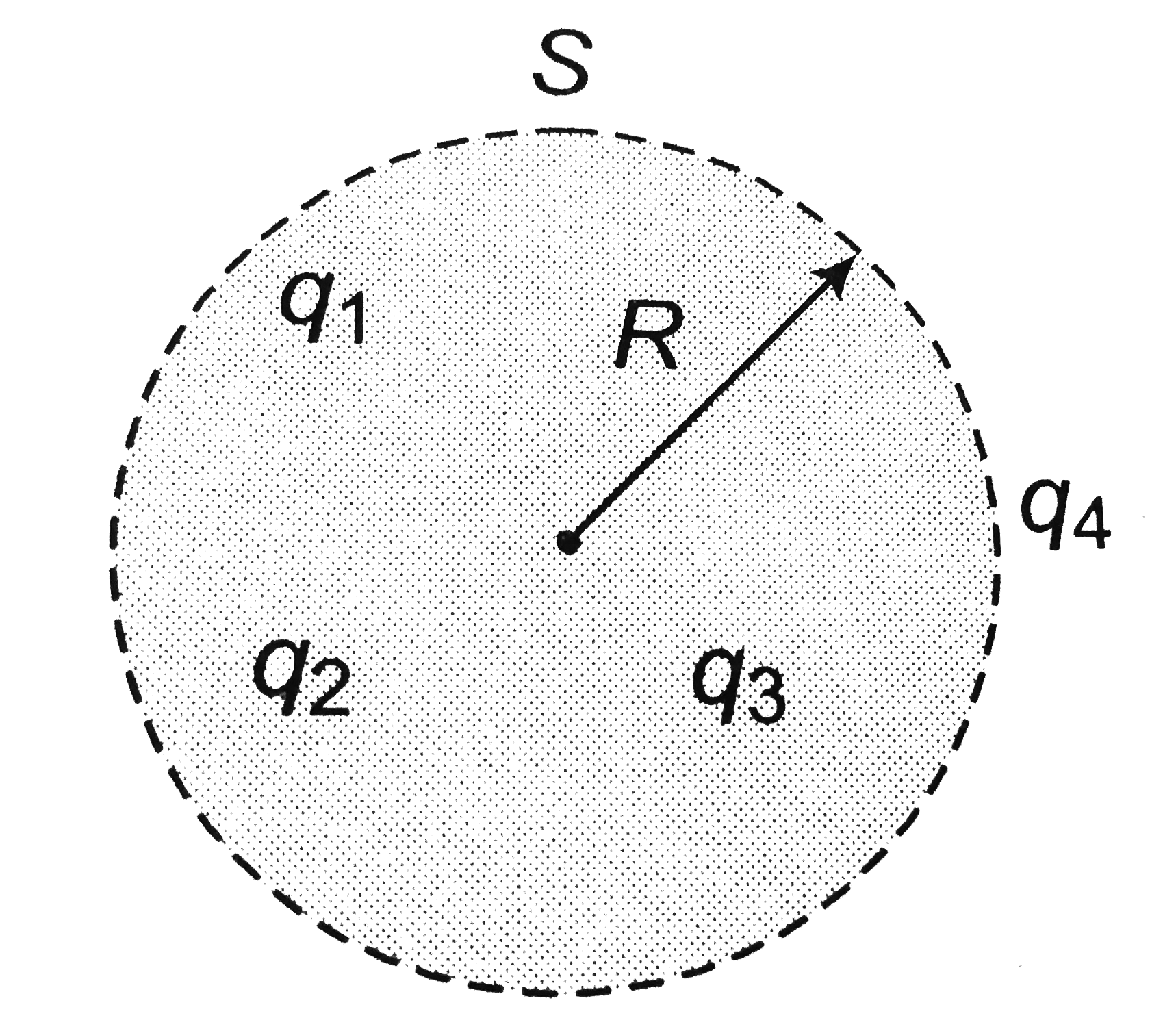 A∮s(→E1+→E2+→E3).d→A=q1+q2+q32ε0B∮s(→E1+→E2+→E3).d→A=(q1+q2+q3)ε0C∮s(→E1+→E2+→E3).d→A=(q1+q2+q3+q4)2ε0DNone of these
A∮s(→E1+→E2+→E3).d→A=q1+q2+q32ε0B∮s(→E1+→E2+→E3).d→A=(q1+q2+q3)ε0C∮s(→E1+→E2+→E3).d→A=(q1+q2+q3+q4)2ε0DNone of these - Question 2 - Select One or More
Consider Gauss's law
∮→E⋅→ds=qε0
Then, for the situation shown in figure at the Gaussian surface
 A→Edue→q2 would be zero.B→E due to both q1andq2 would not be zeroCϕ due to both q1andq2 would not be zero.Dϕ due to q2 would be zero.
A→Edue→q2 would be zero.B→E due to both q1andq2 would not be zeroCϕ due to both q1andq2 would not be zero.Dϕ due to q2 would be zero. - Question 3 - Select One
Two fixed charges −2Q and +Q are located at points (−3a,0) and (+3a,0) respectively. Then which of the following statement is correct?
APoints where the electric potential due to the two charges is zero in x-y plane, lie on a circle radius 4a and centre (5a,0)Bpotential is zero at x=a and x=9aCboth a and b are wrongDboth a and b are correct
The value of charge q1,q2andq3 as shown in the figure are
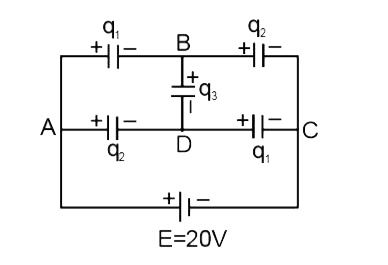 View Solution
View SolutionAssertion: Four point charges q1,q2,q3 and q4 are as shown in Fig,The flux over the shown Gaussians surface depends only on charges q1 and q2
Reason:Electric field at all points on Gaussians surface depends on any charges q1 and q2
 View Solution
View SolutionAssertion:- In a given situation of arrangement of charges, an extra charge is placed outside the Gaussion surface. In the Gauss Theroem
∮→Ed→s=Q∈ε0Q∈ remains unchanged whereas electric field →E at the site of the element is changed.
Reason:- Electric field →E at any point on the Gaussian surface is due to inside charge only.View SolutionThree charges −q1,+q2 and −q3 are placed as shown in the figure. The x-component of the force on −q1 is proportional to
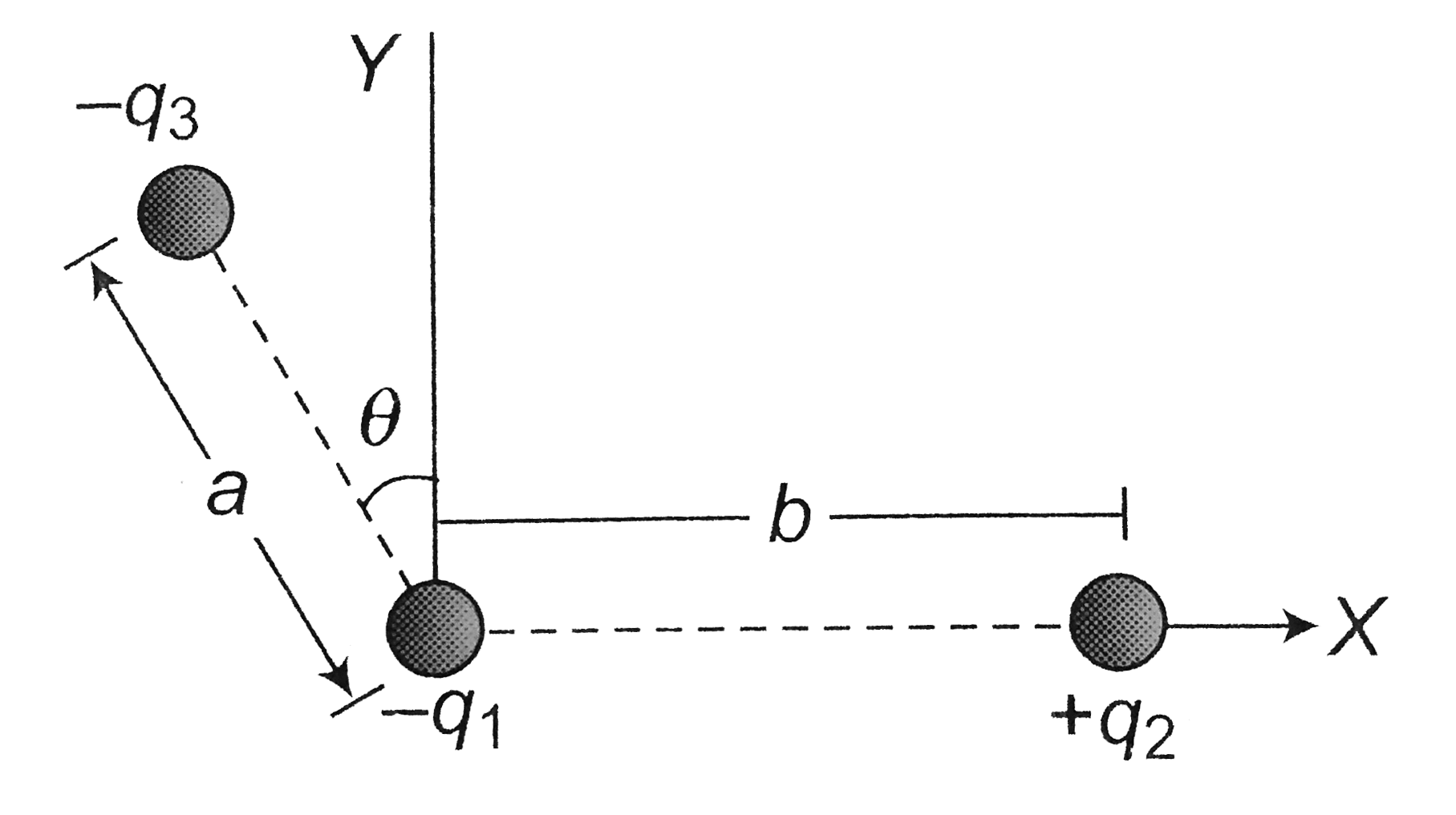 View Solution
View SolutionThree charges −q1,+q2 and −q3 are placed as shown in the figure. The x-component of the force on −q1 is proportional to
 View Solution
View Solution

